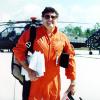
New Rotax 670 Install
Started by
nlappos,
116 posts in this topic
Create an account or sign in to comment
You need to be a member in order to leave a comment

Started by
nlappos,
You need to be a member in order to leave a comment